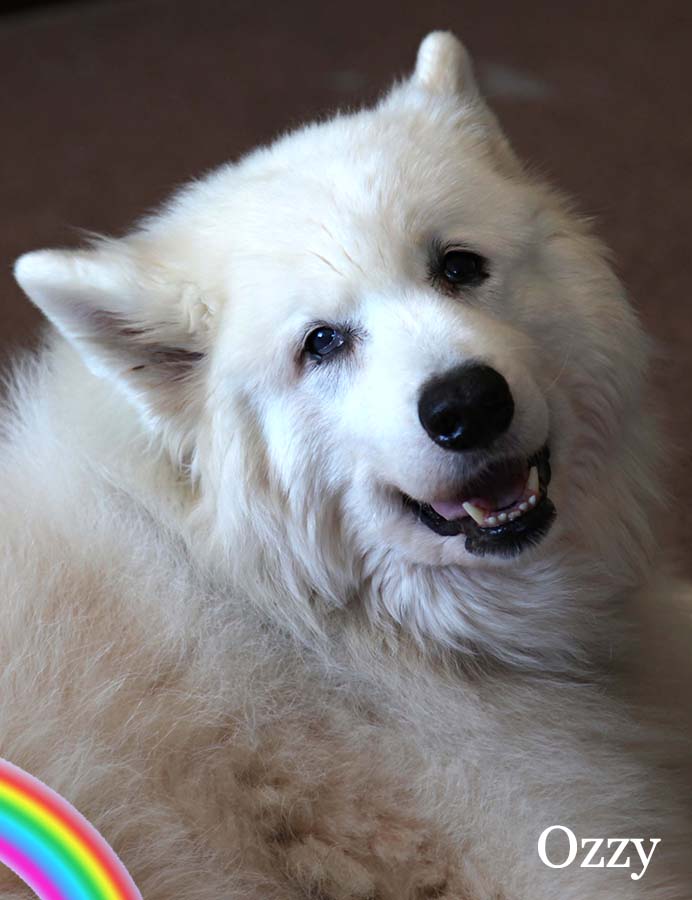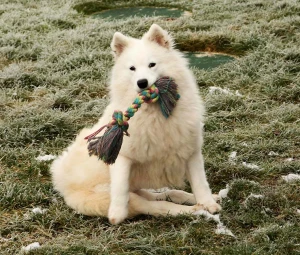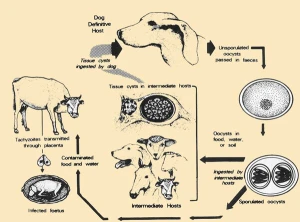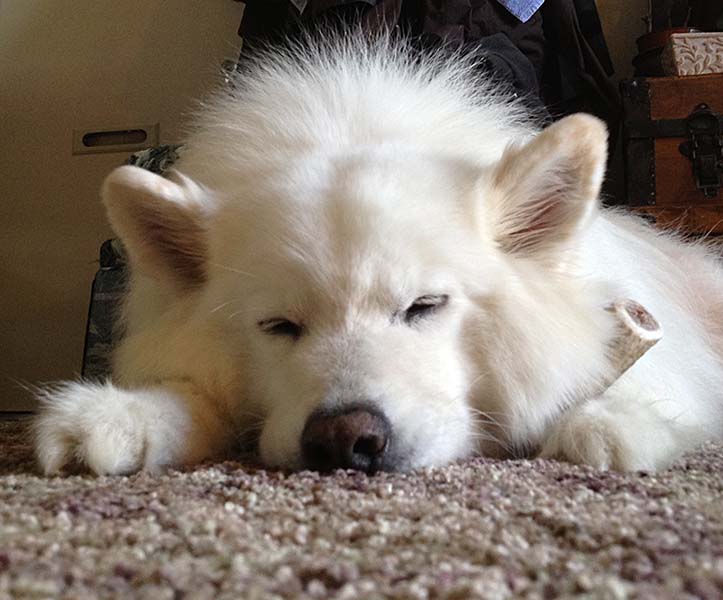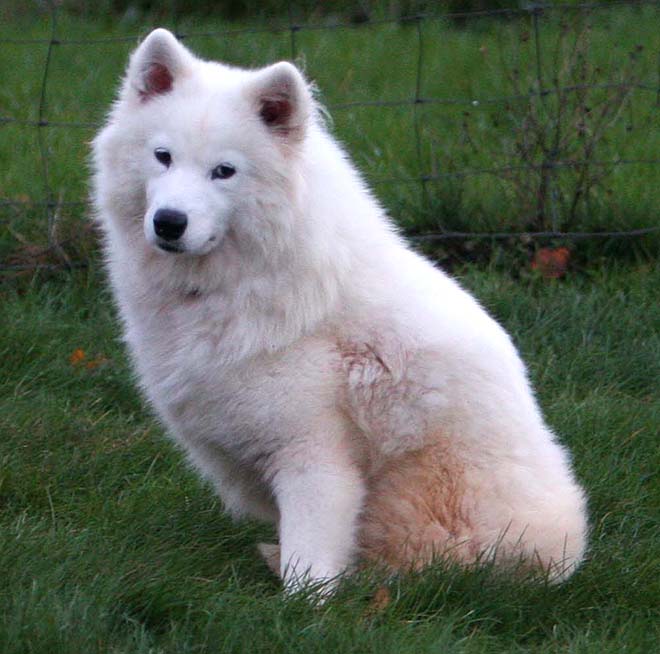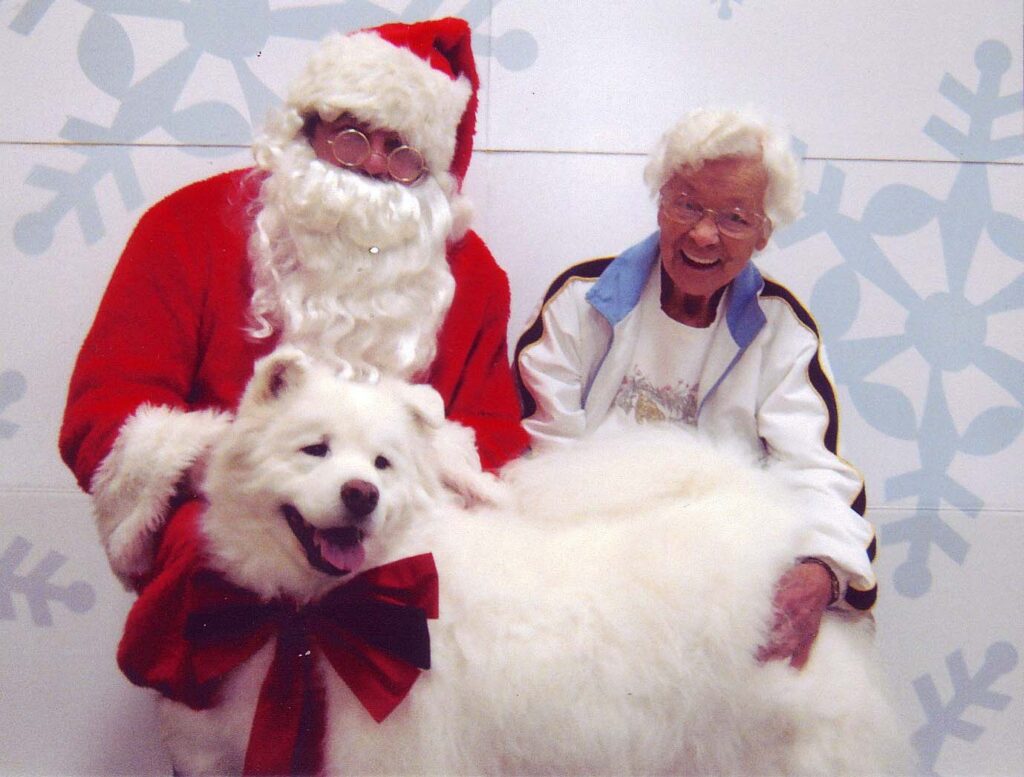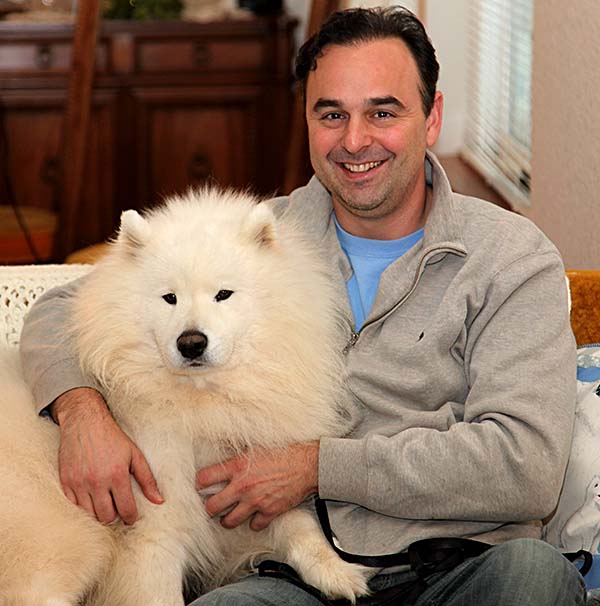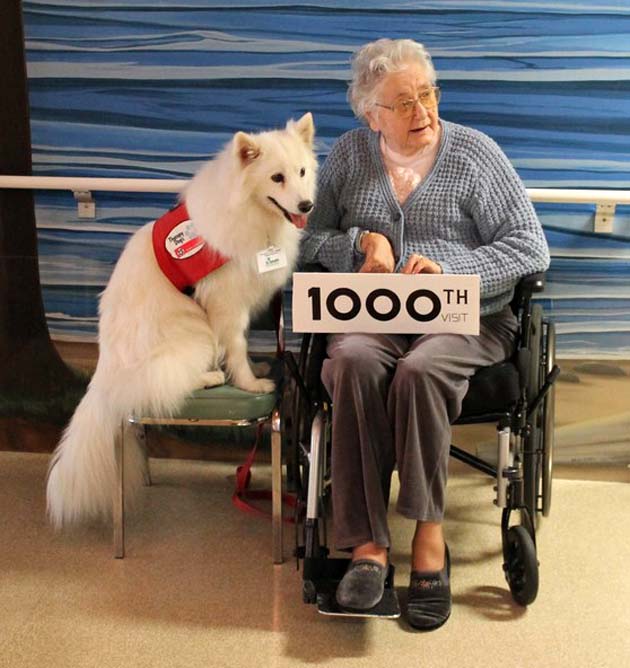July 2013
Three times in the past month there were dogs advertised on Craigslist we tried to help. One was in Beaverton; Jen and Rick were able to learn he came through a different breed rescue and advised them. They learned he would go back to them and tried to make contact, but weren’t able to get a reply. When they found he would be at an adoption event they went, only to find he had already been adopted. The second was a dog in British Columbia who was available, then not, then available, and finally the day he was supposed to come south they said he had been given away. The third was north of Billings, Montana, well out of our area. The dog was ultimately handled by Denver Samoyed Rescue when one of their volunteers picked him up during a holiday trip to Billings. Sometimes it just works out perfectly.
Then we heard of a dog just east of Moscow, Idaho whose owner had been killed in an auto accident. A rescuer there wrote to Sibe Rescue, who in turn called us in. The dog’s name is Trent, and he is ten years old. He was being kept with a neighbor who decided, without a vet, to put him on a huge dose of Prednisone. That so depressed his immune system that he developed a bad kidney infection and he is in the WSU vet hospital. The word at this writing is that Trent will be coming west in time to make an appearance at the rescue picnic. We hope his recovery continues.
On the 7th of July we had a call from a vet hospital in West Seattle asking about a microchip. Someone found a Sammy, wandering loose and in bad condition, and the chip said we knew who he was. It wasn’t one of the chips we implanted, but we had a record because we took him in rescue — and placed him — in early 2009. As far as we knew he went to a great home and was still doing well, but we were dismayed to learn he was now only 39 pounds and in terrible shape. This is a dog who came to us at the opposite extreme of 94 pounds. When we finally talked to the adopter we learned she gave him away a year ago, and claimed to have visited him often. And she wanted him back. After seeing pictures of this badly neglected, emaciated dog we did something that has never happened before. We notified her that under the terms of her contract we would refuse to return the dog to her. Poor Sammy was literally only a few pounds from dying. Now he is in a great foster home being nursed back to health. When we do have a special case like this we do everything possible to ensure his next home will be as perfect as humanly possible.
Our rescue picnic is July 20 at our home in Tenino. If you haven’t received your invitation, please let us know!



